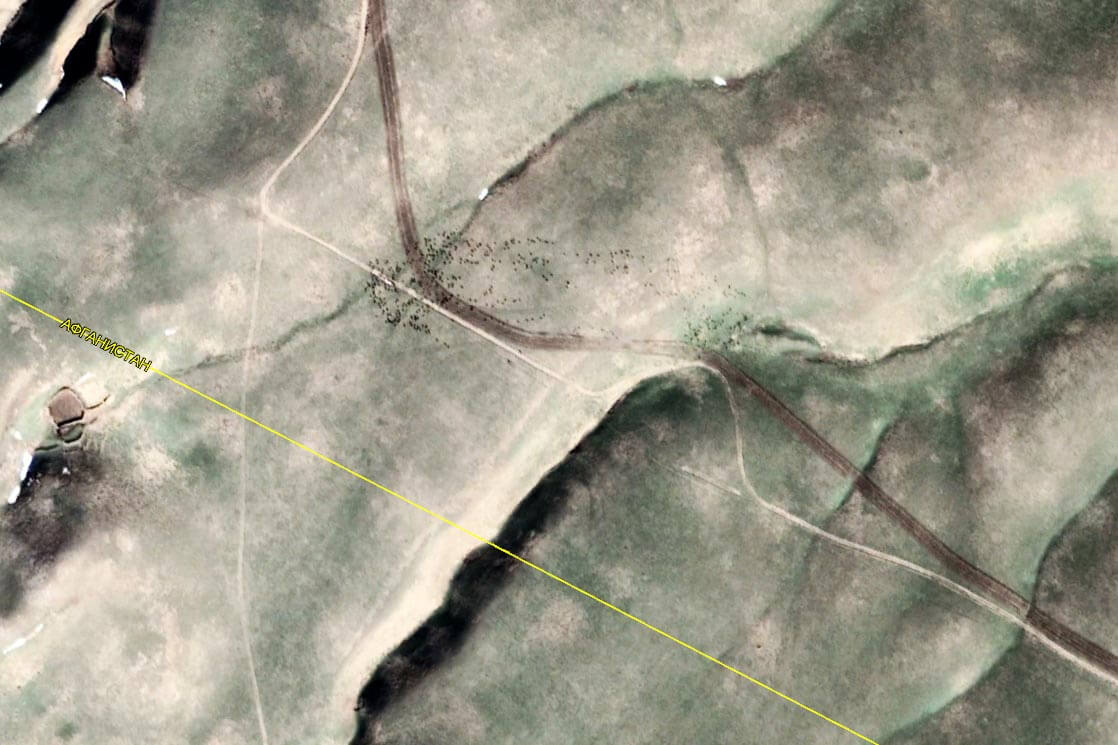Turkmenistan Border Seeing Illegal Economic Activities Committed From Afghanistan’s Side – The Times Of Central Asia
Turkmenistan Border Seeing Illegal Economic Activities Committed From Afghanistan's Side Times of Central Asia


Afghanistan’s Illicit Activities in Turkmenistan Border Region

Citizens of Afghanistan are using thousands of square kilometers of territory that border Turkmenistan for illicit economic purposes. Specifically, Afghans graze on the land illegally, engage in unrestrained hunting, and gather fruits from wild trees, according to a report by the Chronicles of Turkmenistan, which cited a MeteoJournal.ru story that analyzed satellite photos of the region.
The Turkmenistan-Afghanistan Border Region
The Turkmenistan-Afghanistan border region is a control zone, which is a section of any border with restricted access that is between a few meters and several kilometers deep. It’s also commonly referred to as a “neutral” zone.
Afghans’ Illegal Activities
According to MeteoJournal, satellite images show that Afghans are freely entering this area of Turkmenistan, mostly for the purpose of raising livestock. One photo depicts a herd of sheep, as well as a sudden change in the density of vegetation along the line of engineering structures that delimit the border zone within the territory of Turkmenistan. Where the herds graze in front of the engineering structures, there is hardly any vegetation.
Environmental Impact
Additionally, Turkmenistan’s border zone experiences regular fires, according to MeteoJournal. Environmentalist Andrey Zatoka speculated that intentional grass burning may have caused the fires. Intentional burning of lands used for grazing by livestock is a common tool used by farmers around the world to cultivate vegetation for their animals.
Sustainable Development Goals (SDGs)
- SDG 15: Life on Land – The illegal activities in the Turkmenistan-Afghanistan border region pose a threat to the biodiversity and ecosystems of the area.
- SDG 12: Responsible Consumption and Production – The unauthorized grazing, hunting, and fruit gathering by Afghans in Turkmenistan contribute to unsustainable resource use.
- SDG 16: Peace, Justice, and Strong Institutions – The control zone along the border needs to be effectively managed and regulated to prevent illicit activities.
According to the publication’s Telegram channel, a powerful DDoS (distributed denial-of-service) attack started after this content was posted on the MeteoJournal website –and has been ongoing for the past few days.
SDGs, Targets, and Indicators
| SDGs | Targets | Indicators |
|---|---|---|
| SDG 15: Life on Land | Target 15.1: By 2020, ensure the conservation, restoration, and sustainable use of terrestrial and inland freshwater ecosystems and their services, in particular forests, wetlands, mountains, and drylands, in line with obligations under international agreements. | Indicator 15.1.2: Proportion of important sites for terrestrial and freshwater biodiversity that are covered by protected areas, by ecosystem type |
| SDG 15: Life on Land | Target 15.2: By 2020, promote the implementation of sustainable management of all types of forests, halt deforestation, restore degraded forests, and substantially increase afforestation and reforestation globally. | Indicator 15.2.1: Progress towards sustainable forest management |
| SDG 15: Life on Land | Target 15.5: Take urgent and significant action to reduce the degradation of natural habitats, halt the loss of biodiversity, and protect and prevent the extinction of threatened species. | Indicator 15.5.1: Red List Index |
| SDG 16: Peace, Justice, and Strong Institutions | Target 16.7: Ensure responsive, inclusive, participatory, and representative decision-making at all levels. | Indicator 16.7.1: Proportions of positions (by sex, age, persons with disabilities, and population groups) in public institutions (national and local legislatures, public service, and judiciary) compared to national distributions |
1. Which SDGs are addressed or connected to the issues highlighted in the article?
SDG 15: Life on Land
The issues highlighted in the article are related to the unsustainable use of land and natural resources, which aligns with SDG 15: Life on Land. This goal aims to protect, restore, and promote the sustainable use of terrestrial ecosystems, halt biodiversity loss, and combat desertification and deforestation.
2. What specific targets under those SDGs can be identified based on the article’s content?
Target 15.1: By 2020, ensure the conservation, restoration, and sustainable use of terrestrial and inland freshwater ecosystems and their services, in particular forests, wetlands, mountains, and drylands, in line with obligations under international agreements.
The article highlights the illegal grazing activities by Afghans on the border territory of Turkmenistan. This activity can contribute to the degradation of terrestrial ecosystems and disrupt the balance of vegetation in the region.
Target 15.2: By 2020, promote the implementation of sustainable management of all types of forests, halt deforestation, restore degraded forests, and substantially increase afforestation and reforestation globally.
The article mentions that intentional grass burning may have caused regular fires in Turkmenistan’s border zone. This practice can lead to forest degradation and contribute to deforestation.
Target 15.5: Take urgent and significant action to reduce the degradation of natural habitats, halt the loss of biodiversity, and protect and prevent the extinction of threatened species.
The unsustainable activities described in the article, such as illegal grazing and hunting, can lead to the degradation of natural habitats and pose a threat to biodiversity in the region.
Target 16.7: Ensure responsive, inclusive, participatory, and representative decision-making at all levels.
While not directly related to the environmental issues discussed in the article, the mention of a powerful DDoS attack after the content was posted on the MeteoJournal website highlights the need for inclusive and participatory decision-making processes to address cybersecurity challenges.
3. Are there any indicators mentioned or implied in the article that can be used to measure progress towards the identified targets?
The article does not explicitly mention any indicators. However, based on the information provided, the following indicators can be used to measure progress towards the identified targets:
Indicator 15.1.2: Proportion of important sites for terrestrial and freshwater biodiversity that are covered by protected areas, by ecosystem type
This indicator can be used to assess the extent to which important sites for biodiversity, including the border territory between Turkmenistan and Afghanistan, are protected from unsustainable activities such as illegal grazing and hunting.
Indicator 15.2.1: Progress towards sustainable forest management
This indicator can be used to evaluate the progress made in implementing sustainable forest management practices in the border region, considering the potential impact of intentional grass burning on forest ecosystems.
Indicator 15.5.1: Red List Index
The Red List Index measures changes in the overall extinction risk of species over time. Monitoring this indicator can help assess the impact of unsustainable activities on threatened species in the border region.
Indicator 16.7.1: Proportions of positions (by sex, age, persons with disabilities, and population groups) in public institutions (national and local legislatures, public service, and judiciary) compared to national distributions
While not directly related to the environmental issues discussed in the article, this indicator can be used to assess the inclusivity and representation in decision-making processes, which is important for addressing challenges such as cybersecurity.
4. SDGs, Targets, and Indicators
| SDGs | Targets | Indicators |
|---|---|---|
| SDG 15: Life on Land | Target 15.1: By 2020, ensure the conservation, restoration, and sustainable use of terrestrial and inland freshwater ecosystems and their services, in particular forests, wetlands, mountains, and drylands, in line with obligations under international agreements. | Indicator 15.1.2: Proportion of important sites for terrestrial and freshwater biodiversity that are covered by protected areas, by ecosystem type |
| SDG 15: Life on Land | Target 15.2: By 2020, promote the implementation of sustainable management of all types of forests, halt deforestation, restore degraded forests, and substantially increase afforestation and reforestation globally. | Indicator 15.2.1: Progress towards sustainable forest management |








